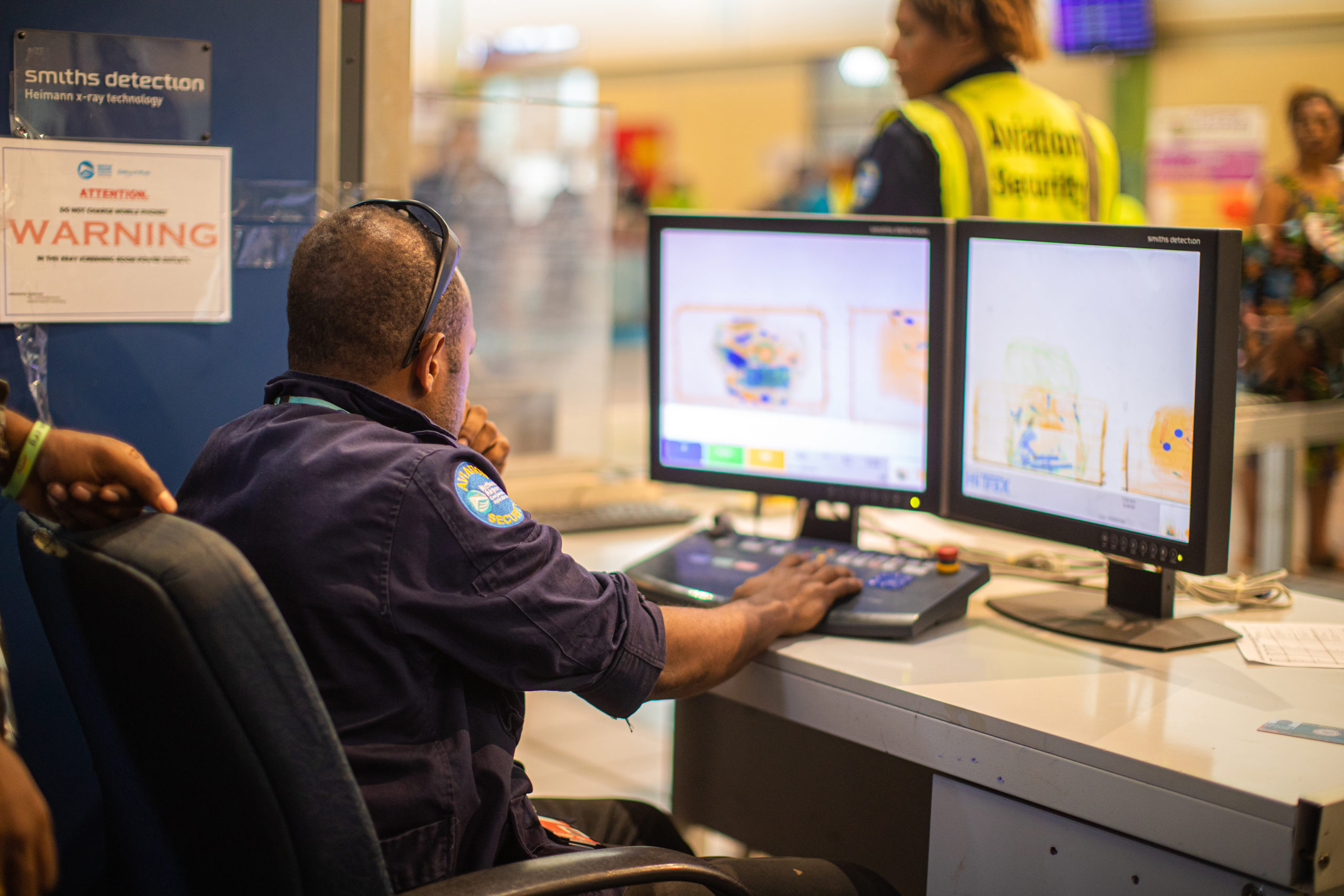Safety Assurance & Regulatory Compliance
Background
The Safety Assurance and Regulatory Compliance (SARC) Division was established in 2017 to ensure a systematic approach to managing safety and quality throughout National Airports Corporation (NAC) operations in Papua New Guinea. The team members were put together by bringing compliance officers from various Operations Divisions in NAC to form the SARC Division.
The National Airports Corporation as the holder of Operating Certificates under the PNG Civil Aviation Rules (CARs) Parts 139, 140 and 141 is required to establish and implement a Safety and Quality Management System which meets the requirements of PNG CAR Part 100;
- PNG CAR Part 139 – Aerodrome Certification and Operations
- PNG CAR 140 – Aviation Security Service Organisation
- PNG CAR Part 141 – Aviation Training Organisation
- PNG CAR Part 100 – Safety and Quality Management Systems
The SARC Division is an independent unit that is not directly involved in the implementation of daily operations of NAC, however, it is responsible for the monitoring and oversight of Safety, Quality, and Compliance requirements in accordance with the Civil Aviation Rule Part 100 – Safety and Quality Management Systems. The SARC Division manages safety and quality data collection and reporting of all hazards, incidents, and accidents including those reportable under the PNG Civil Aviation Rule Part 12 and they also liaise and coordinate with NAC’s stakeholders, airline operators, and PNG Civil Aviation Authority for certification requirements and all safety and compliance requirements.
Core Function
SARC core function is to implement the Safety & Quality Management System. This means SARC is responsible for implementing a systematic approach to managing safety and quality throughout NAC operations. The SMS & QMS are an integrated set of work practices and procedures for monitoring, measuring and improving the safety of all activities across the entire organization.
Roles & Activities
SARC implement vital activities that are required to effectively perform its core function to achieve results.
1. The Safety Management Systems
Safety management systems is established to systematically manage safety through a continuous process of hazard identification and managing the risks associated with the hazards.
List of Safety Management systems activities carried out by SARC;
- Establishment of the Safety Management System (Policy, Objectives & SMS Manual)
- Safety Risk Management (Hazard Identification & Risk Assessment)
- Safety Assurance (Monitoring and Measurement of Safety Performance, Investigations, Audits, Inspections, Safety Committees)
- Safety Promotion (Safety Communication, Training and Education)
2. The Quality Management Systems
The quality management systems are developed and implemented to allow the organization to document and improve its practices in order to better satisfy customers and stakeholders expectations and to meet regulatory requirements. The activities involved in the Quality management systems are;
- Establishment of the Quality Management System (Policy, Objectives & QMS Manual)
- Audit Program (Internal Audits, Inspections, Spot Checks)
- Management Review (Committee review of QMS Outcomes)
- Document and Records Control (Amendments, Retention Periods)
- Quality Improvement Projects (Training, Software, Best Practices)
Additional SARC Activities
Apart from carrying out the Safety and Quality Management Systems Activities, SARC also plays various important role in the Organization;
- Responsible for coordinating the Initial and Renewals of Aerodrome Operating Certificates (ADOCs) for all the 22 airports in Papua New Guinea managed by National Airports Corporation.
- Represents NAC in liaising and communicating with Aviation Stakeholders. (Civil Aviation Safety Authority (CASA PNG), Accident Investigation Commission (AIC), Niusky Pacific, Airline Operators and International Organizations)



